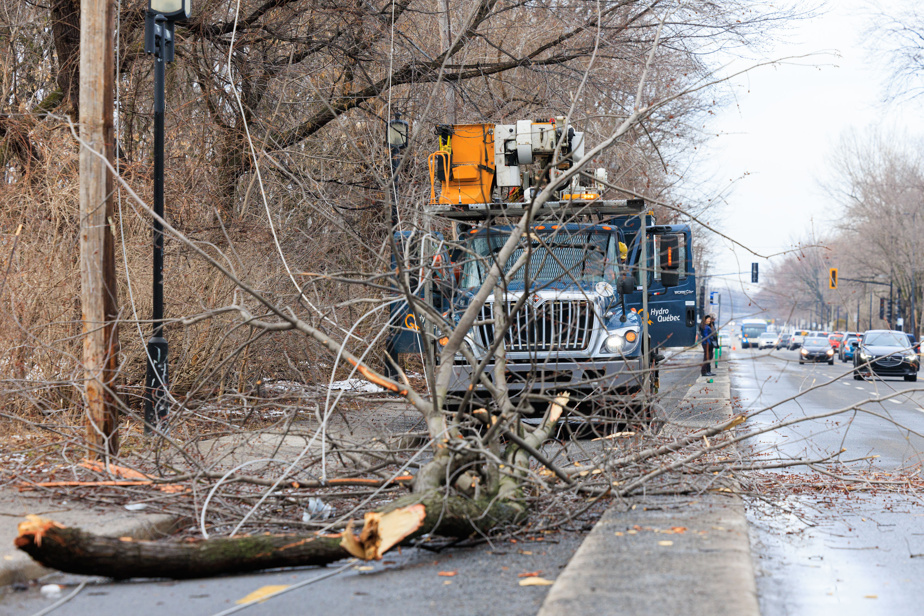(Montreal) As Montrealers recover from the ice storm that hit part of Quebec on April 5, blue-collar workers are busy clearing the streets and sidewalks of branches that have fallen across the city.
Although it is still too early to assess the extent of the damage to public property, the City of Montreal has indicated that since the beginning of the ice storm, the 311 service has recorded more than 920 requests to report fallen trees and more. of 4560 requests for collapsed branches.
Usually during the same period, barely a dozen reports are reported for fallen branches or trees.
In an email sent to La Presse Canadienne, the City of Montreal specifies that this report is “significantly undervalued considering that the figures presented do not include data from the parks”.
Five days after the storm, work to clear public spaces continues around the clock in most areas of the city.
The maintenance of trees along streets and in local parks is the responsibility of the boroughs. Different professionals such as forest engineers, arboriculture inspectors and pruners assess the damage done to trees before deciding on the necessary intervention. Trees that pose immediate security challenges are felled.
Due to the heavy layer of ice that accumulated, even healthy trees had to be felled. It is unclear at this time how many trees were knocked down as a result of the storm.
The Service des grands parcs, du Mont-Royal et des sports manages large parks and nature parks such as Frédérick-Back Park and Île-de-la-Visitation Nature Park. The trees felled in these parks are, among other things, sent to the Center de valorisation des bois urbains in order to transform the wood into planks or shavings for pulp.
As for the branches picked up by City teams at the curb, they are transported to the Saint-Michel Environmental Complex. The material is then transformed into wood chips for various uses such as the manufacture of chipboard used in construction.

